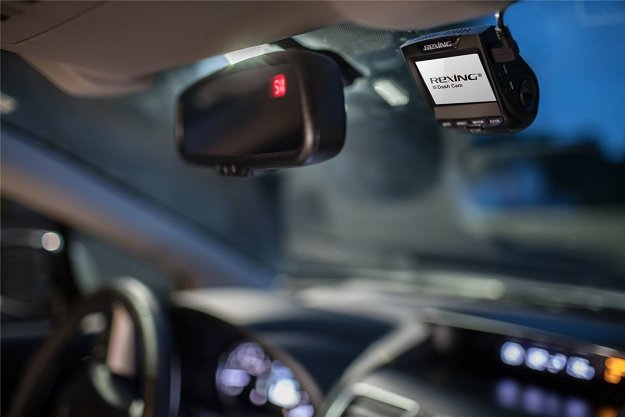I’ve always been embarrassed by the Escalade. It, like the Hummer H2, was a truck that made me ashamed to be American. I’d grimace when I saw one on the road and wonder what nincompoop would choose a luxury truck that, from a technical standpoint, had more in common with a horse and buggy than it did with a comparably priced Range Rover.
Unlike the Range Rover, the Escalade had a chintzy interior, gaudy exterior designs, and about as much off-road or snow-day driving capability as a blue whale on casters.
Despite this, the Escalade, since its debut in 1998, has been the gold standard for full-size luxury trucks in America, easily outselling everything else in its class. And while I must admire it for its sales success, I must admit that I saw no good reason for its market dominance aside from its being American made.
… a lump of American steel that makes me want to hum the national anthem.
For 2015, though, it seems that’s all about to change. May I proudly present to you the fourth-gen Cadillac Escalade; one of the must stunning trucks I’ve ever laid eyes on and a lump of American steel that makes me want to hum the national anthem.
First off, the Escalade finally looks the part of a world-class full-size luxury SUV. It no longer looks like a Tahoe with a different front end. It has finally been given distinctive styling all the way around. It stands tall and proud with sharp bodylines that start with the vertical Cadillac headlights and lead down the side of the long body.
Built on a new, fully boxed steel ladder frame that’s 75 percent stiffer than the third-gen, the 2015 Escalade sits on 20-inch wheels with 22s as an optional upgrade. Moving those big rims side to side is an electric power steering system that Caddy claims helps save fuel. Elevating the not-so-bulbous body off those enormous rims is the new Cadillac Magnetic Ride Control suspension system with both Tour and Sport modes.
A Sport suspension mode might seem silly in an American land monster like the Escalade. Based upon the recent Caddy offerings, though, it’s not as laughable as it once was. The “new” 6.2-liter V8 bolted under the sinewy hood produces 420 horsepower and 460 pound-feet of torque.
Just like the Corvette Stingray, the 2015 Escalade’s improved power – five percent more horsepower and 10 percent more torque to be precise – is due in large part to the slew of advanced engine managements systems bolted to the pushrod V8, including cylinder deactivation and direct fuel-injection.
Power is sent to either the rear wheels through a six-speed automatic called the Hydra-Matic to an automatically locking rear differential or to all four wheels, when spec’d with 4×4. Cadillac has not made fuel economy numbers available yet. But like the Silverado before it, I presume fuel-efficiency – just like power – will, too, be up.
Delightfully, braking should now be just as forceful as acceleration. Engineers reworked the braking system, adding four-wheel disc brakes and improving brake pedal feel and braking performance.
Step inside and the cabin is anything but business as usual. Cadillac designers went all out with what they call “cut-and-sewn and wrapped” materials, including rich leather and real wood.
Seats have been formed to be not only more comfortable but also to appear more sculpted. As standard, the front seats are both heated and cooled, while second-row seats are heated.
Step inside and the cabin is anything but business as usual.
Up in front of the driver is a standard 12.3-inch digital gauge cluster that will display four different themes. Just above that, customers can spec a heads-up display. Over in the center console is an eight-inch CUE infotainment screen. Customers can also order a rear-seat Blu-Ray DVD entertainment system.
Overall the cabin is much quieter than any Escalade before it. To ensure a pleasant drive, designers triple sealed the doors and added the Bose Active Noise Cancelling system.
Cadillac hasn’t simply upped the levels of refinement; it has also improved safety, too. The fourth-gen Escalade comes with Front and Rear Automatic Braking, which uses short-range radar and ultrasonic sensors to sense impending collisions in the front and rear of the vehicle. Should the system detect an imminent collision, it will apply the brakes – up to full complete braking – to avoid the accident.
In the case of a side impact, Cadillac engineers added a Front Seat Center-Mounted airbag, which protects the passenger on the opposite side of the crash.
The 2015 Cadillac Escalade will go into production in Arlington, Texas next spring and should be hitting showrooms later in 2014. Although I’ll have to reserve my final opinion for when I get behind the road, I can confidently say that I’m thoroughly impressed by the 2015 Escalade.
Editors' Recommendations
- 2025 Cadillac Escalade IQ: price, release date, design, specs
- The gas-guzzling Cadillac Escalade is going all-electric with the IQ
- The 2021 Escalade has a 38-inch OLED screen and my god, it’s gorgerous
- Cadillac will give its biggest SUV a gargantuan 38-inch curved screen
- The directors of Avengers: Endgame have made a commercial for Cadillac’s XT6




